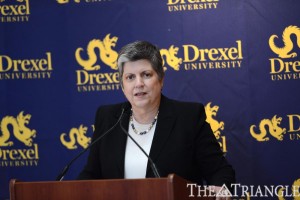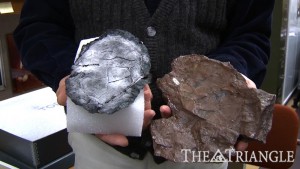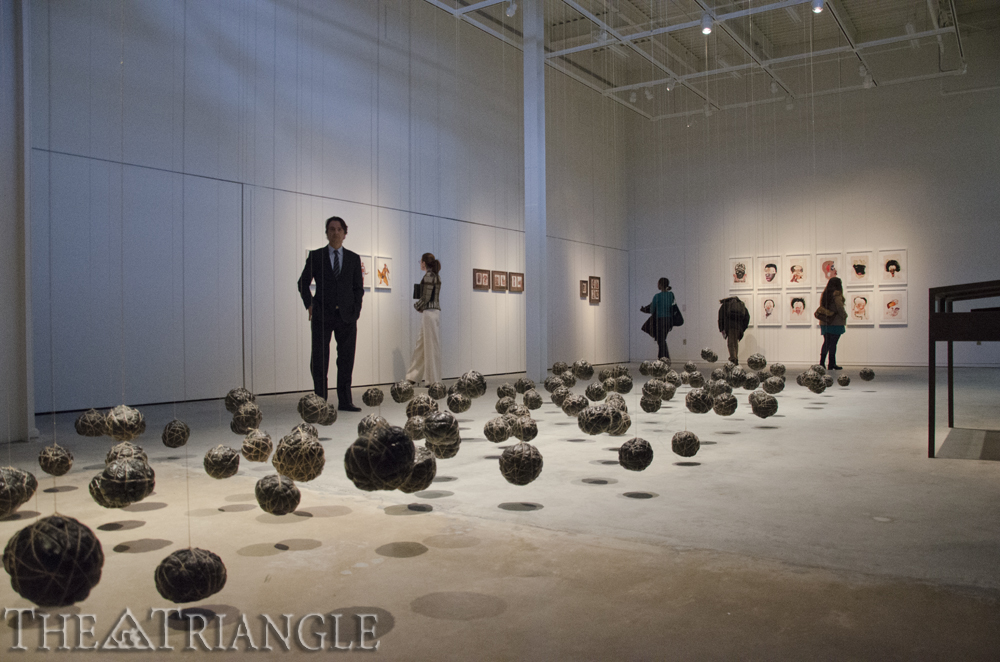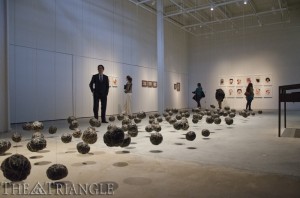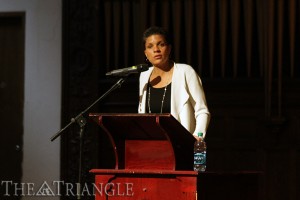
Michelle Alexander, author of “The New Jim Crow: Mass Incarceration in the Age of Colorblindness,” spoke to Drexel students May 6 in the Main Auditorium. The event was co-sponsored by The Good Idea Fund, the College of Arts and Sciences, and the Africana Studies program.
“We use our criminal justice system to label people of color and use all the same discriminatory practices that we supposedly left behind … employment discrimination, housing discrimination, the right to vote — suddenly legal. As a criminal, you have just as few rights and arguably less respect than a black man living in Alabama at the height of Jim Crow,” Alexander quoted from her book.
Alexander worked as a civil rights lawyer after graduating from Stanford Law School. She was the director of the Civil Rights Clinic on the Stanford Law School faculty. She served several years as director of the Racial Justice Project of the American Civil Liberties Union of Northern California. She joined The Ohio State University faculty in 2005, the same year she received a Soros Justice Fellowship. The fellowship allowed her to work on her book, “The New Jim Crow.”
The Good Idea Fund asked Alexander to speak and introduced her before she began. The event was coordinated by Jacqueline Rios, the communication and events coordinator of the Center for Interdisciplinary Programs. Julie Mostov, the vice provost of global initiatives and a professor of political science, spoke before Alexander came onstage.
Alexander began by describing a picture she had once seen depicting a Latina woman at a demonstration. The woman was holding a sign that said, “F— weed, legalize my mother.”
“I felt my eyes prick with tears. Something in her eyes and her expression conveyed her pains, her fears and outrage. … I can almost hear her say, ‘This country will legalize weed, will legalize pot, but my own mother? The woman who risked her life, coming in hopes in giving me a better [life], who’s now treated like a common criminal, faced with prison or deportation and living in shadows and a state of fear,’” Alexander said.
“We live in confusing times today, … but it looks good from a distance. We turn on the television, and there’s President Barack Obama, standing in the Rose Garden, looking handsome and dignified and in charge — the nation’s first black president. … But then you drive a few blocks from the White House, and you find the other America. You find neighborhoods where three out of four young black men already spent time behind bars or under correction control. And the rest? It’s just a matter of time,” she said.
These neighborhoods were described by Alexander as a “brand-new undercaste” and “invisible.” She talked about how no figure in the media, including politicians or newscasters, would talk about the suffering felt in those areas. “Martin Luther King Jr. would turn in his grave today,” she said.
Alexander talked about what led her to make this realization. She talked about a young man she met when she was director of the Racial Justice Project for the ACLUNC. She was working on a lawsuit against police in northern California called the DWB Project. She worked to advertise a number that people could call if they felt that the police racially discriminated against them.
“Within the first three minutes, we received thousands of calls,” Alexander said.
She described a young man who came in with a stack of papers of all the notes documenting discrimination against him. At first, Alexander felt that she had found a star witness for her case, but she then found out that he was a felon. When Alexander told him that she couldn’t use him for the case because of his record, the young man tried to explain that it was a set-up and then ripped up his notes and left in frustration, accusing her of not actually trying to help.
She later found out that the drug task force of the Oakland Police had been setting up young black men by planting drugs on them and taking them in, just as the man had tried explaining to her earlier, including a police officer he identified.
“I realized he’s right about me. I’m no better than the police. The minute he told me he was a felon, I just stopped listening. I couldn’t even hear what he had to say,” Alexander said.
After conducting some research, she found that it was the fact that the man was innocent that put her in the wrong; she was tackling the issues of racial injustice without also representing those who were found guilty. She discussed the idea that men with criminal records were not counted in census data about unemployment and other problems. She also discussed the beginning of the war on drugs that began with President Reagan, when drug crime was in decline. She said that the amount of incarceration quintupled after that time period and that it actually had to do with racial politics.
“The total number of incarcerations for drug offenses was more than the total number of all other offenses in 1980, … almost exclusively aimed at poor neighborhoods of color,” Alexander said.
She discussed the political moves of the Reagan administration to uncover the crack problems that spread through poor neighborhoods. She said that it was to motivate politicians to make drug laws tougher and created a competition between the political parties to make them stronger, citing the Clinton administration’s law that denied drug offenders access to food stamps.
“You don’t have to be convicted of drug offenses. You only need to be suspected. They can take the money out of your pocket. They can take your car away from you. That’s giving the police direct monetary influence … in the longevity in this war on drugs,” Alexander continued.
She then discussed how the Supreme Court had closed its doors to taking out the racial bias because it required direct evidence that indicated intention, despite all the evidence that was acquired.
After a question-and-answer section, Alexander retired to a book signing and reception. In an interview, she talked about what her plans would be on the future of the message she created.
“I’m now interested in supporting people who are engaging in activism and organizing in their community. I’m praying that people will continue to do community organizing and advocacy in ending the drug war and abolishing all these forms of racial discrimination on these people who just got out of prison. … It’s possible. It just requires people in all of these communities saying, ‘We no longer want to send people to jail for minor drug offenses. We want to have rehabilitation. We want a public-health approach, not a cruel justice approach,’” Alexander said.
Her book, published in 2010, was a New York Times best-seller and was called a “social gospel” based on its coverage of the targeting of African-American men since the beginning of the war on drugs. It also received the 2011 National Association for the Advancement of Colored People Image Award for best nonfiction.
The post The Good Idea Fund hosts ‘New Jim Crow’ author appeared first on The Triangle.



